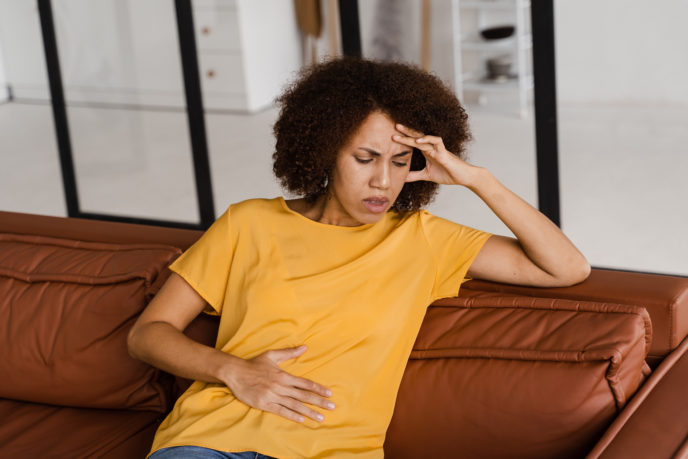
Why Am I Spotting Between Periods
Spotting – that light bleeding you sometimes experience outside your regular period – can be unsettling. While it’s often harmless, it’s important to understand the possible causes.
Is Spotting Between Periods Normal?
Spotting between periods is fairly common and can happen to most women at some point in their lives. It’s not necessarily abnormal, but it can be a sign of an underlying condition.
Causes of Spotting Between Periods
Spotting between periods, also known as intermenstrual bleeding, refers to light bleeding occurring outside of your regular menstrual cycle. Let’s explore the common causes that trigger bleeding between periods.
Hormonal Fluctuations
Changes in estrogen and progesterone levels, stemming from stress or hormonal imbalances, can disrupt your cycle, leading to spotting.
Ovulation
Mid-cycle spotting, known as ovulation bleeding, can occur as a result of the release of an egg from the ovary.
Birth Control
Hormonal birth control, such as pills or IUDs, may cause irregular bleeding or spotting, particularly when starting or switching birth control methods.
Infections and STIs
Pelvic inflammatory disease (PID) or sexually transmitted infections (STIs) like chlamydia can cause spotting between periods.
Perimenopause
During the transition to menopause, which typically occurs in a woman’s 40s or 50s, menstrual cycles can become irregular, leading to spotting.
Uterine Fibroids
Non-cancerous growths in the uterus, known as uterine fibroids, can lead to abnormal bleeding, including spotting.
The Link Between Uterine Fibroids and Spotting
What are Uterine Fibroids?
Uterine fibroids are non-cancerous growths that develop within or on the walls of the uterus. Fibroids can range in size from small, pea-sized growths to larger, grapefruit-sized masses. Depending on their size and location, fibroids can cause a variety of symptoms, including abnormal bleeding.
How Do Fibroids Cause Spotting?
Fibroids can cause irregular bleeding patterns depending on their size and location. When fibroids grow in or near the lining of the uterus, they can interfere with the menstrual flow, causing spotting between periods or heavier bleeding during menstruation. This can lead to discomfort, pain, and inconvenient symptoms for women with fibroids.
Is My Spotting Between Periods Caused By Fibroids?
Abnormal bleeding is one of the most common symptoms of uterine fibroids. However, spotting between periods can be caused by a variety of factors. It’s helpful to keep a diary of your monthly cycle, writing down any unusual or unexpected bleeding to help determine if your spotting is caused by fibroids. In your diary, note the length and amount of bleeding, as well as any associated pain.
In addition to bleeding between periods and heavy prolonged menstrual bleeding, there are some common symptoms associated with fibroids, which can also be recorded in your diary. If one or more of these symptoms appear along with abnormal bleeding, it may point to uterine fibroids being the cause. Here are some symptoms of uterine fibroids that you may also experience with abnormal bleeding:
- Pelvic pain or pressure
- Frequent urination
- Constipation
- Painful intercourse
- Enlarged abdomen or uterus
When to See a Doctor for Spotting Between Periods
While spotting between periods is often harmless, you may want to see your doctor if you are experiencing uterine fibroid symptoms or the following:
- Persistent or recurrent spotting
- Heavy bleeding or bleeding lasting longer than usual
- Pelvic pain or discomfort
- Abnormal vaginal discharge or odor
Get Treatment for Abnormal Bleeding and Fibroids with AFC
Spotting between periods can be inconvenient, but understanding its potential causes, including uterine fibroids, is crucial for effective management. If you’re experiencing abnormal bleeding or persistent or concerning uterine fibroid symptoms, don’t hesitate to request an appointment with one of our fibroid specialists in NY and NJ.
Related Blogs & Videos
Learn more about vascular health, prevention, and care for Peripheral Arterial Disease.





